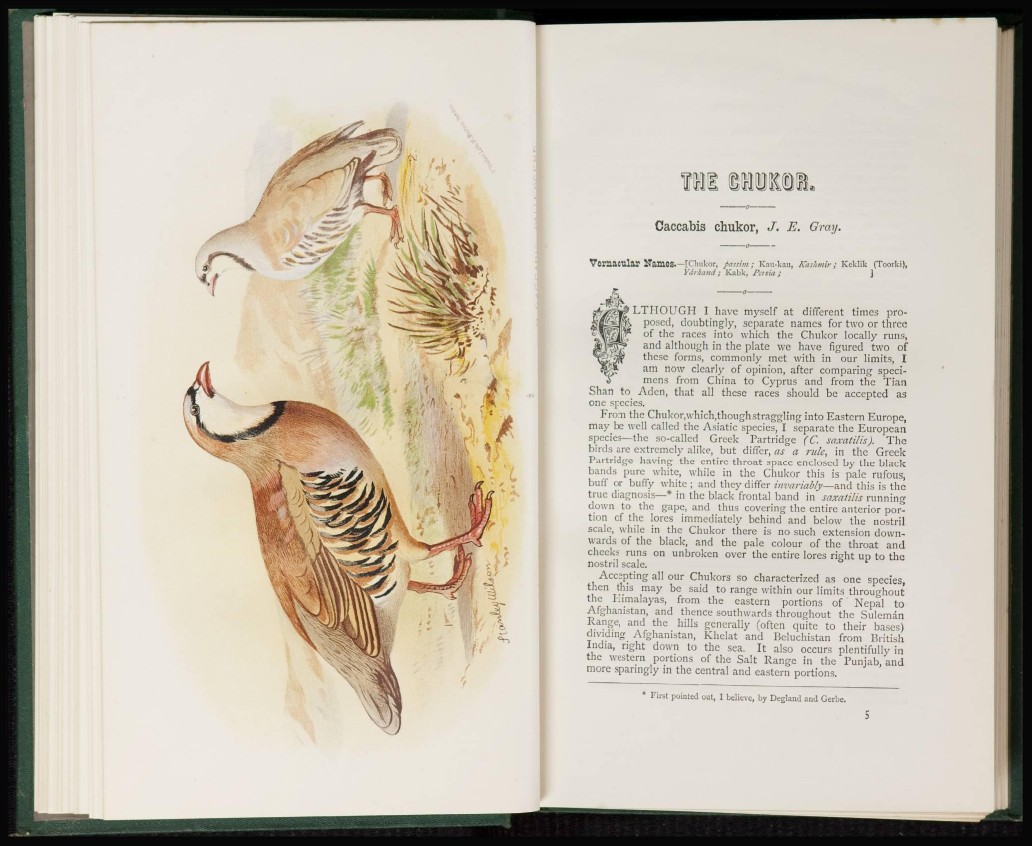
wi mum
Caccabis chukor, J. E. Gray.
VornaCUlar Names.—[Clmkor, passim; Kau-kau, Kashmir; Keklik (Toorki),
Ydrkandj Kabk, Persia; }
K '
LTHOUGH I have myself at different times proposed,
doubtingly, separate names for two or three
of the races into which the Chukor locally runs,
and although in the plate we have figured two of
these forms, commonly met with in our limits, I
am now clearly of opinion, after comparing specimens
from China to Cyprus and from the Tian
Shan to Aden, that all these races should be accepted as
one species.
From the Chukor,which,thoughstraggling into Eastern Europe,
may be well called the Asiatic species, I separate the European
species—the so-called Greek Partridge (C. saxatilis). The
birds arc extremely alike, but differ, as a rule, in the Greek
Partridge having the entire throat space enclosed by the black
bands pure white, while in the Chukor this is pale rufous,
buff or buffy white ; and they differ invariably—and this is the
true diagnosis—* in the black frontal band in saxatilis running
down to the gape, and thus covering the entire anterior portion
of the lores immediately behind and below the nostril
scale, while in the Chukor there is no such extension downwards
of the black, and the pale colour of the throat and
checks runs on unbroken over the entire lores right up to the
nostril scale.
Accepting all our Chukors so characterized as one species,
then this may be said to range within our limits throughout
the Himalayas, from the eastern portions of Nepal to
Afghanistan, and thence southwards throughout the Suleman
Range, and the hills generally (often quite to their bases)
dividing Afghanistan, Khelat and Beluchistan from British
India, right down to the sea. It also occurs plentifully in
the western portions of the Salt Range in the Punjab, and
more sparingly in the central and eastern portions.
* First pointed out, I believe, by Degland and Gerbe.
s